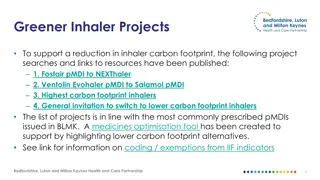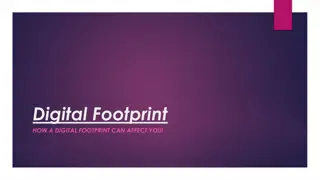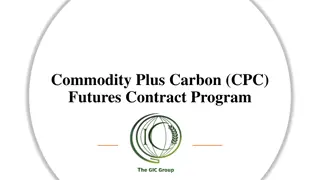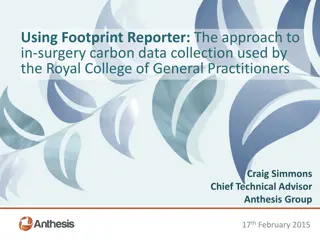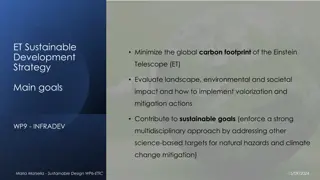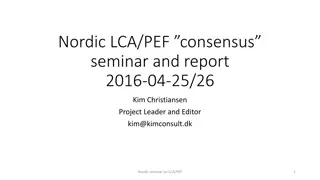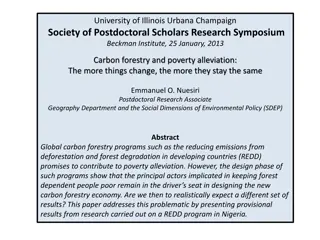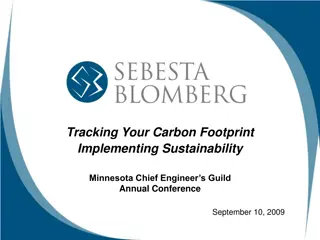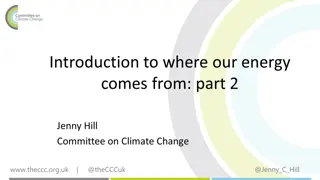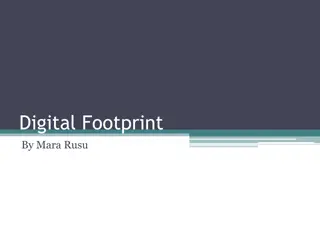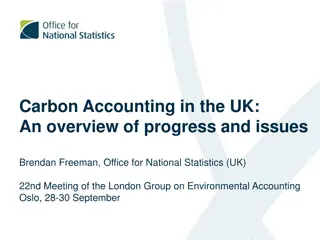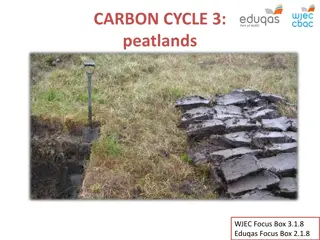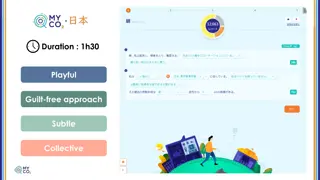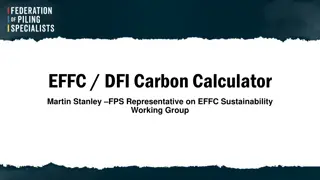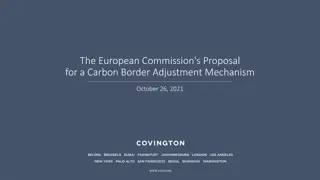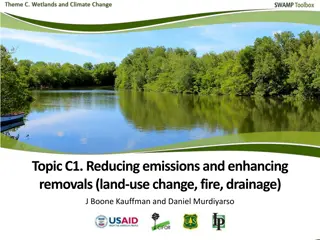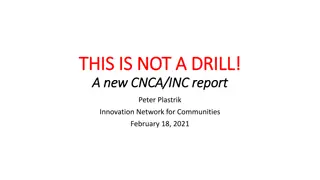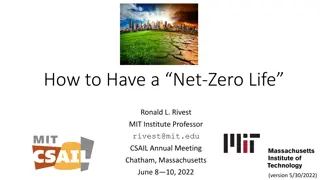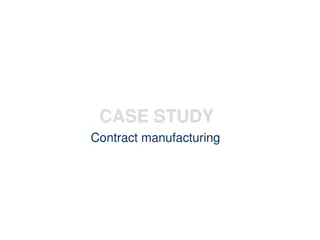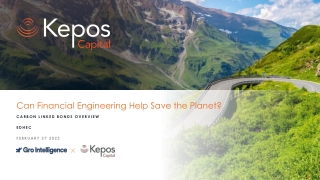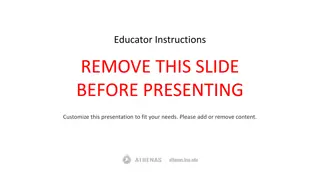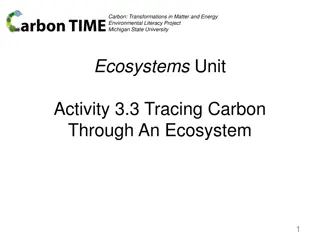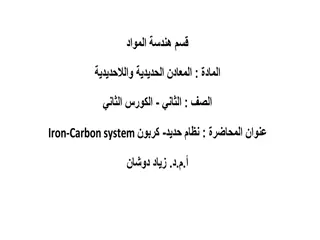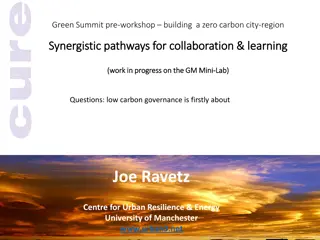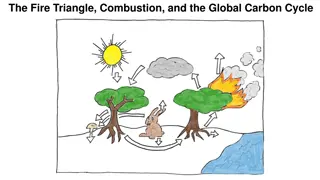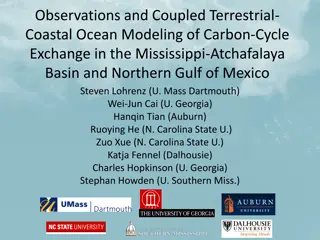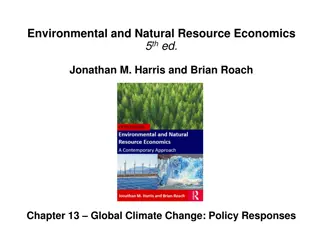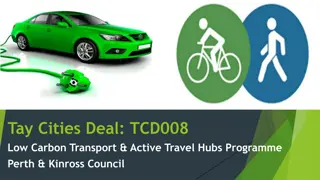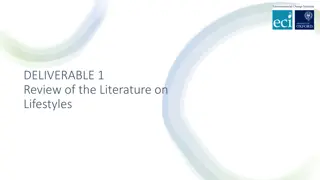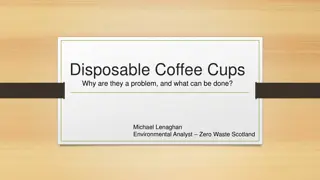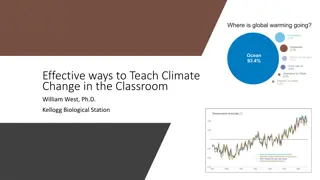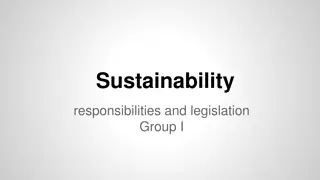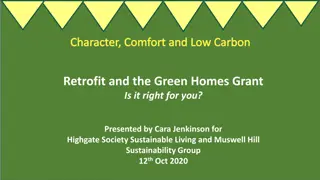Taking the First Steps to Reduce Business Carbon Footprint
Initiating efforts to reduce business carbon footprint involves identifying emission sources, analyzing energy consumption, and implementing strategies to measure and track emissions. This involves understanding where emissions originate from, gaining insights into the numbers through consumption data, and assessing value chain emissions. Utilizing carbon calculator tools plays a crucial role in this process.
- Business Sustainability
- Carbon Footprint Reduction
- Emission Sources
- Energy Consumption
- Value Chain Emissions
Download Presentation

Please find below an Image/Link to download the presentation.
The content on the website is provided AS IS for your information and personal use only. It may not be sold, licensed, or shared on other websites without obtaining consent from the author. Download presentation by click this link. If you encounter any issues during the download, it is possible that the publisher has removed the file from their server.
E N D
Presentation Transcript
Start the change- First steps to reducing emissions June Davenport, Sustainability Team Manager, Groundwork
What are your drivers for reducing your What are your drivers for reducing your business carbon footprint? business carbon footprint? Energy costs? Climate Change Ask / Procurement Tenders? Environmental Policy? Staff interested? Everyone else is setting Net Zero Targets?
Whatever they are remember you cant Whatever they are remember you can t change what you don t measure . change what you don t measure .
STEP 1: Where are emissions coming from? STEP 1: Where are emissions coming from? Premises space/water heating, lighting etc (gas, oil, LPG, electricity, air con) Equipment/production Transport Waste disposal Value chain products & services procured, your own products & services
STEP 2: Getting to grips with the STEP 2: Getting to grips with the numbers numbers Scope 1 & 2 Scope 1 & 2 Recent 12 months (calendar year or FY) Gas/oil/LPG consumption (meter reads or delivery invoices) in kWh, m3, litres, kg Business vehicle fuel consumption (preferable) or mileage (fuel card data, invoices, miles travelled and type of vehicle) in litres or miles Electricity consumption at your premises (meter reads, supplier bills, landlord charges) in kWh
Value chain emissions Value chain emissions- -Scope 3 Scope 3 Employee business travel (expenses claims) in miles Employee commuting in miles Waste production (including volume recycled) in kg or tonnes Transport and distribution in litres of fuel or miles Working from home in working hours Water (bills, meter reads)
STEP 3: Use a simple carbon calculator tool STEP 3: Use a simple carbon calculator tool Free Carbon Calculator Tool - www.carboncharter.org/footprint UK carbon conversion factors - www.gov.uk/government/collections/government-conversion- factors-for-company-reporting Join the Carbon Charter use your member support to calculate your carbon footprint www.carboncharter.org/contact-us/
STEP 4: What can be improved and how? STEP 4: What can be improved and how? Buildings Efficiency improvements? Quick Wins Mid Term Investments Transport Efficiency improvements? Quick Wins Mid Term Investments
BUILDINGS Efficiency = quick wins BUILDINGS Efficiency = quick wins Ensure your premises are well insulated and heated efficiently Service regularly (boiler/heating system/cooling system) Turn down your thermostat and use smart controls Choose low energy appliances - look for A+ ratings, LED lights Turn off appliances rather than leaving them on standby
BUILDINGS Efficiency BUILDINGS Efficiency- - Mid term investment Mid term investment LED lighting Renewable energy generation (onsite) Offsite investment in renewable technology Consolidate or move to low/zero carbon building
TRANSPORT Efficiency = quick wins TRANSPORT Efficiency = quick wins Become more efficient route planning; consolidation of deliveries and orders; good maintenance and efficient driving, car sharing Encourage the use of public transport and active travel Avoid physical movements - use virtual meetings where possible; work from home.
TRANSPORT TRANSPORT - -Mid term investment Mid term investment Upgrade to more efficient ICE vehicles (Adblue etc) and hybrid Switch to alternative fuels electric vehicles, HVO, hydrogen Support electrification through charging infrastructure Encourage staff to switch through salary schemes
Real example Real example Precision Marketing Precision Marketing First steps process working with Carbon Charter/Groundwork Started reviewing energy bills and calculated emissions Calculated current carbon footprint and action plan Established a Green Champion to implement actions Advised on how waste and recycling is dealt with Switched to Electric vehicles and Solar PV
Real example Real example Box Box- -It East It East First Steps Measured their emissions and implemented measures to reduce by switching to LED lighting and solar photovoltaics on the roof
Real example Real example - - Lignacite Lignacite First steps process working with Groundwork Started reviewing energy bills and calculated emissions Suggested equipment change to more energy efficient models Recommended the use of LEDs Advised on how waste and recycling is dealt with Gave advise for staff to act more sustainably Advised on better ways to run energy intensive equipment
What next? What next? Talk about it get your staff onboard, share with stakeholders Start tracking your emissions, check bills and record data Prioritise action Set reduction targets Measure progress Review and refine reporting process
First steps First steps help available help available https://carboncharter.org/first-steps/ Useful guides available covering all of these to help any business Calculate a carbon footprint Develop a carbon reduction policy and action plan Get your staff onboard Make buildings more efficient Consider renewable energy Dealing with transport, waste, carbon offsetting
The future The future- - Carbon Charter Carbon Charter www.carboncharter.org Supporting businesses to reduce carbon and reach Net Zero. An environmental award scheme and sustainable business network for SMEs in Suffolk and Norfolk. Key to certification - carbon emissions reductions and communication (internally and externally). Employees are key to businesses meeting their environmental objectives and enhancing their reputation.
Groundwork Carbon Management Services Groundwork Carbon Management Services Establishing a pathway to net zero Carbon Literacy training Green House Gas inventory and reporting External assurance of company reporting Prioritisation of carbon reduction actions Resource efficiency, energy efficiency and carbon management assessments funded programmes still available! funded programmes still available!
Q&As Q&As Any questions? June.davenport@groundwork.org.uk www.groundworksbs.org.uk



